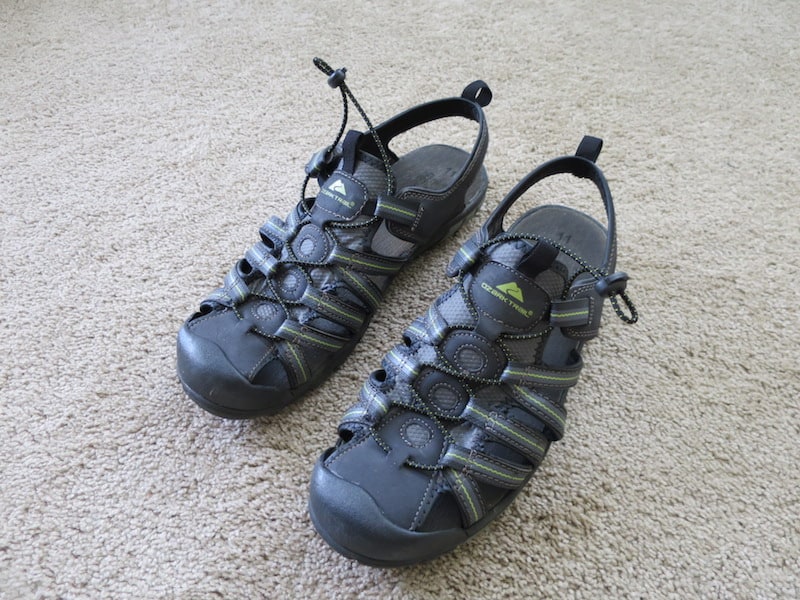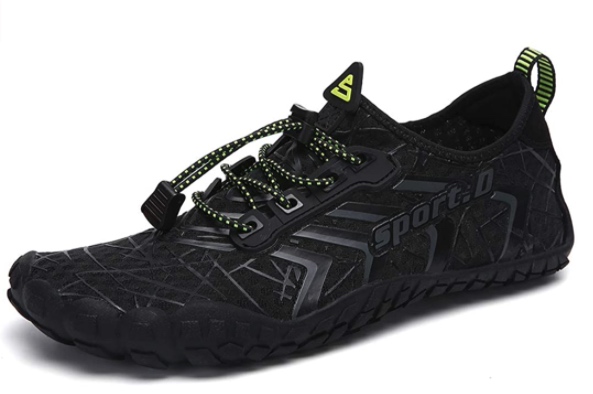You know what they say, having the right gear is crucial when you’re out on the water, and that includes the often-overlooked aspect of footwear – yes, we’re talking about shoes, sandals, and flip-flops!
Believe it or not, wearing the wrong footwear when you’re riding can lead to some serious problems. Think loss of grip and potential injuries. Ouch!
Now, here’s the tricky part: When it comes to picking the perfect pair of water-shoes, the options seem endless. How on earth do you know you’re making the right choice when there are so many different types out there?
Don’t fret! We’re here to dive into the world of personal watercraft (PWC) footwear, discuss what makes the right pair, and help you navigate the many choices! So, let’s lace up (or slip on) and get into the nitty-gritty of finding the perfect footwear!
What Not To Wear
I want to start this off with the kind of shoes you should not wear when riding a PWC. These types of shoes don’t do good under slippery conditions or come off way too easily. (Ramps and docks can be slippery, even the footwells of your PWC, too)
1. Crocs
The first kind to NOT wear is Crocs. They may seem like the perfect footwear when riding a PWC, but they’re not so great in wet conditions.
They don’t give you the traction you need when riding. Crocs can also fall off your feet if they’re not put on properly. (You got to at least put them in ‘4-wheel drive’)
2. Flip Flops
The next kind of footwear to skip is the basic flip-flop. Flip-flops can come off very easily plus offer no real protection.
It’s not when you’re on the PWC you should worry, but when you’re getting on and off that you need to worry. Flip-flops offer no protection from rocks that you might land on when hopping off the watercraft when you beach it.
Also, flip-flops don’t offer protection from the sun and no real cover on cold winter rides.
3. Going Barefoot
I would NOT ride barefoot at all!!!
I have personally cut my foot either on something sticking out of the PWC or hopping on or off on to sharp rocks!
Going barefoot also provides no protection on slimy algae boat ramps. Even many shoes don’t offer much protection, so I if you see green algae you need to be extra careful. I carry a deck brush in my truck to loosen up the algae on the ramps. The algae forms due to the ramp not being used much.
The Best Shoes To Wear
The best shoes for jet skis to have on your feet are called “water-shoes“.
Water-shoes come in many different styles or colors to fit your needs.
They offer the great protection, grip, comfort you need when on your watercraft. They also don’t hold water, plus feel as comfortable as regular tennis shoes!
You can use water-shoes for more than just riding. They work well at the beach, the backyard, water parks, or even hopping off the ski to grab some lunch.
1. Basic Water Shoe
Up first is the basic water shoe like this one. (Amazon Link Ad)
They look the part of a water shoe, but are light on the feet. They allow water to escape quickly plus work very well if all you’re doing is riding a jet ski or swimming.
The basic water shoe is like a slipper where you slide your foot into it, but you have a pull-tight cord for a snug fit.
The bottom of the shoe is rubber to give you a good grip, which you need around wet boat launches.
If you need something simple, in a good price range, then this style of water shoe will work fine.
2. Real Water Shoe
I call the next option a “real water shoe” (Amazon Link Ad) because it’s difficult to differentiate them from a tennis shoe. I’ve had people stop me before getting into the water to let me know I have my tennis shoes on – that’s how real these shoes can look!
Perks
- They look like a normal sneaker.
- They dry quickly.
- Great comfort for long rides or unknown ground conditions.
- It’s like putting on any other shoe.
- Offers protection from the sun.
- Some protection from the cold rides in the winter.
Once you start to wear shoes like this, it will be difficult to go back to anything else.
These shoes have a feel of a normal tennis shoe plus even have laces that are pull-tight.
Factors To Consider
Compared to other types of shoes, water-specific designs do not retain moisture and are quick to dry. They also offer enhanced breathability for your feet, while still providing a level of protection and traction.
Here are things to consider:
- Full foot protection – You want them to give you a good amount of protection. Flip-flops and similar don’t provide much protection, the sun can burn your feet and rocks can cut you if you’re not careful.
- Solid bottom – You want a solid and thick bottom. You need all the traction you can get, the ramps get slippery and with rocks or even fishing lures can cut your feet if you’re not careful.
- Stays put – It needs something that keeps it on your feet, often a pull string or laces. You need it to stay your foot as you’ll be bouncing around on the jetski and if you fall off or go for a swim you don’t want them to fall off.
Traction
When it comes to watercraft, you’ll be in a wet environment, not only wet but hot and sharp objects all around!
Algae likes to form on boat launches and docks, especially when they’re not used often. Algae is very slippery, but it’s easy to fix by brushing the area with a deck brush to loosen it up. (As covered above in this post)
Let’s not forget the areas will be hot with you baking in the sun. Many watercraft have dark color mats and will be hot on the feet! You also have the metal docks and steps that many marina’s and boat launches have that get hot in the sun.
Lastly, the footwells and the docks will be wet and slippery. Getting in and out of a waverunner tends to be around wet areas, so be extra careful and make sure you have the correct footwear.
Wooden Docks
I need to make a note about docks made of wood, especially if you like going barefoot.
I’ve seen far too many people, especially kids, love to go barefoot around the docks. This is dangerous, not only because it’s slippery, but many of these docks are made of wood.
Over time, wood likes to split, especially in areas where the sun hits it and dries it out. You’re just asking to get a splitter in the bottom of your foot if you don’t wear the proper protection on your feet!!!
Just giving the heads-up because beach vibes that PWCs have make people think going barefoot is normal, and it’s not. I suggest proper footwear as getting a splitter out of your foot is annoying, just ask me how I know!
You’ll Need More Clothing
Watercraft footwear are not the only must-have for your new watercraft.
There are the obvious things like sunglasses, sunscreen, but the not so obvious, like wetsuit bottoms that everyone needs while riding.
Check out my guide on what to wear here.
Don’t forget the other accessories, too!

